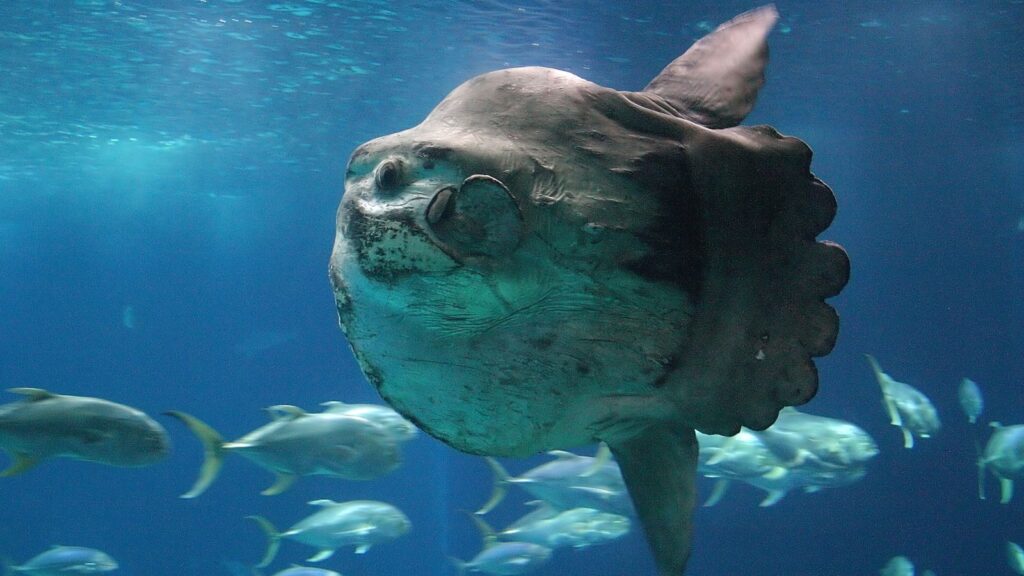The giant sunfish, known for its remarkable size and unique body shape, captures the fascination of marine enthusiasts and curious minds alike. Unlike most fish, sunfish have a distinctive flat and almost circular body, making them a standout species in the vast ocean waters. These intriguing creatures roam both tropical and temperate seas, often surprising those lucky enough to encounter them.
As the world’s largest bony fish, the giant sunfish—also referred to as Mola alexandrini or bumphead sunfish—reaches lengths and weights that seem almost unbelievable.
1. The World’s Heaviest Bony Fish
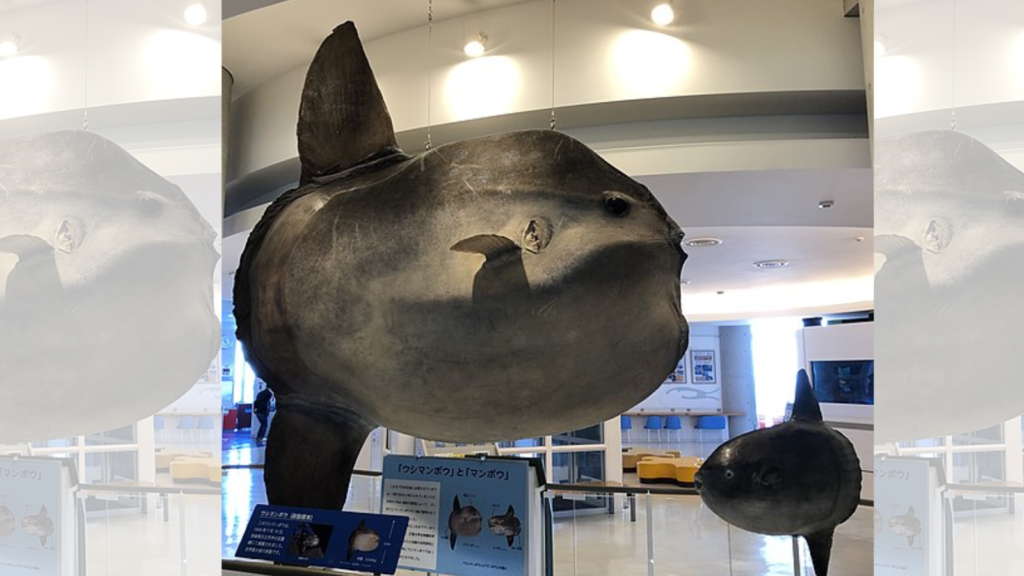
The giant sunfish is the heaviest bony fish on record. Weighing in at an astounding 6,050 pounds, it’s heavier than many cars. This remarkable fish was discovered off the coast of the Azores.
To give you an idea of its size, it weighs as much as a white rhino. With its flat, round body and large fins, the giant sunfish is truly a marvel of marine life.
2. Rarely Kept in Captivity Due to Size
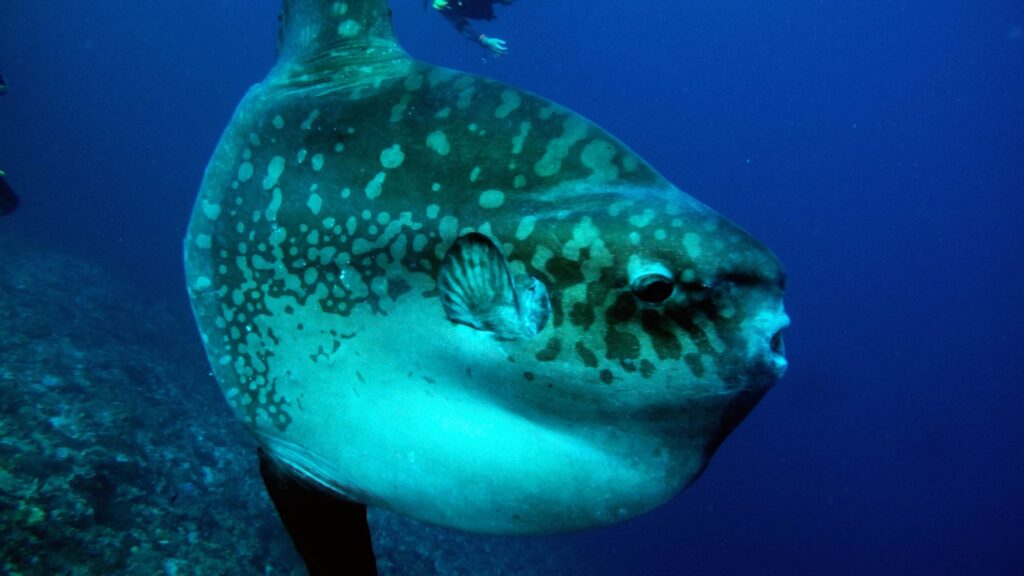
Giant sunfish are seldom kept in captivity primarily because of their enormous size. They can grow up to 11 feet in length and weigh as much as 5,000 pounds.
Their large size makes it challenging for most aquariums to provide a suitable habitat. The tanks required to house them need to be both massively large and deep.
Additionally, their needs in terms of water conditions and diet are complex and expensive to maintain. This makes it even more difficult for aquariums to accommodate them.
3. Latin Name: Mola Mola
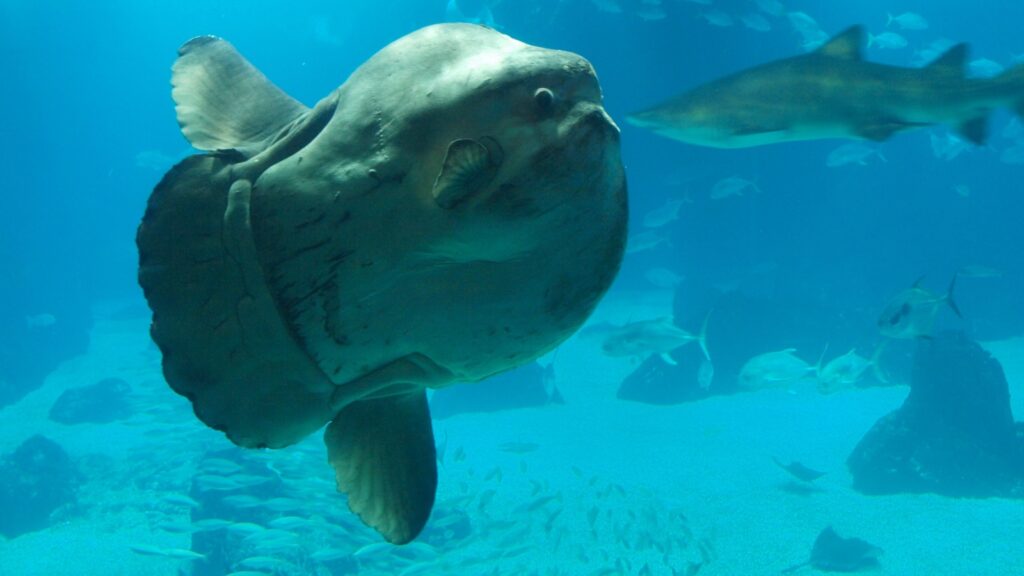
The Latin name of the giant sunfish is Mola mola. The term “mola” means “millstone” in Latin, referencing the fish’s rounded shape and rough skin texture. You might see this name used when scientists discuss the species all over the world.
The name “Mola mola” helps avoid confusion with other types of sunfish. Mola mola is specific to the species of ocean sunfish known for its massive size and distinctive appearance.
4. Sunfish Can Weigh Up to 5000 Pounds
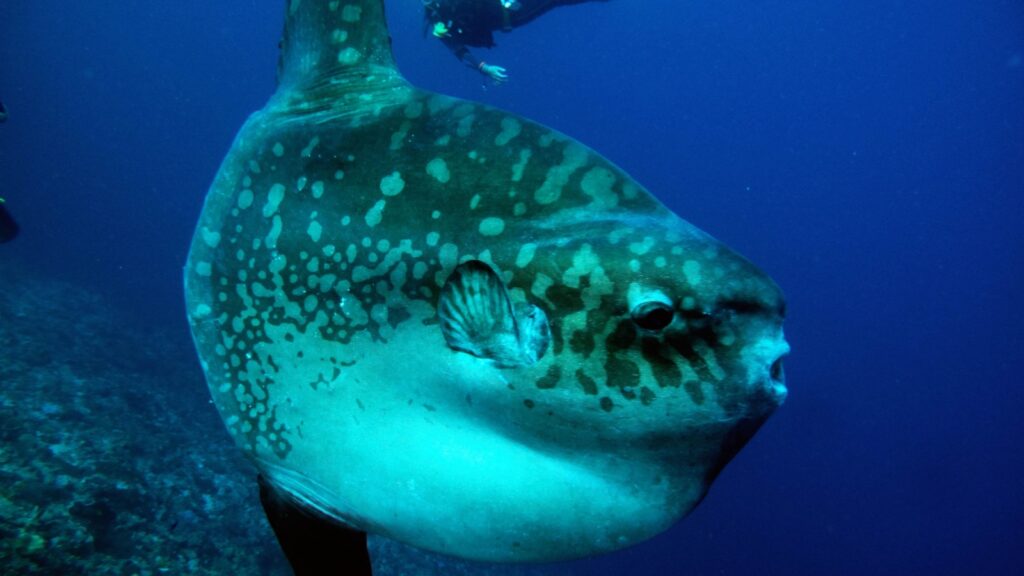
The ocean sunfish, also known as the Mola mola, holds the title for the heaviest bony fish. Weighing up to 5,000 pounds, these giants can reach impressive sizes both vertically and horizontally.
Imagine encountering a sunfish that weighs more than a pickup truck. At up to 14 feet long and 10 feet tall, their size alone makes them a marvel of marine life. These gentle giants are truly unique and fascinating.
5. Capable of Vertical Migrations
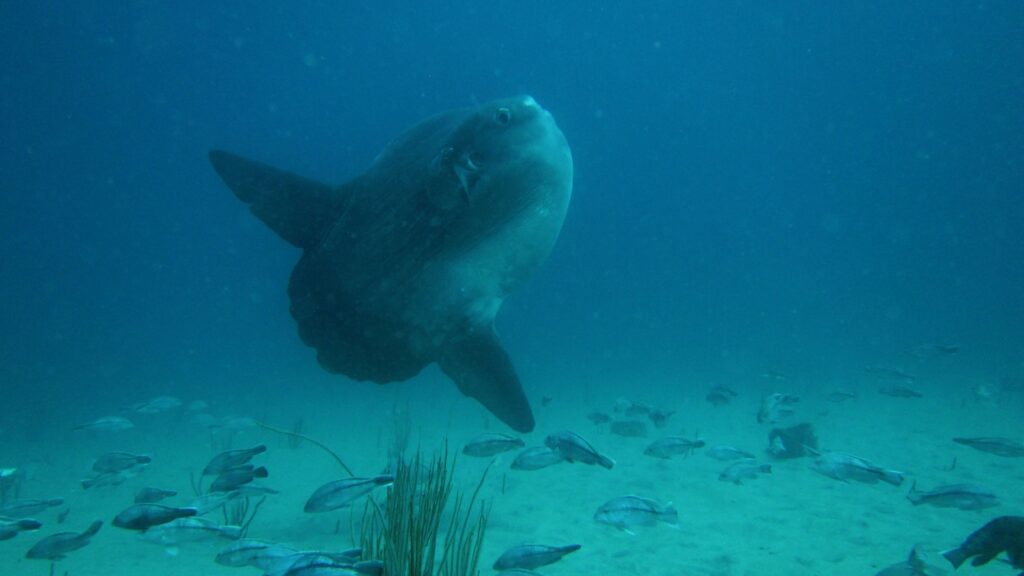
Giant sunfish are known for their ability to make vertical migrations in the ocean. These migrations can range from the surface to depths of several hundred meters.
They do this to find food and regulate their body temperatures. By moving between warmer and cooler waters, they can optimize their energy use and increase their chances of survival.
This behavior is essential for their feeding habits, allowing them to access different types of prey found at varying depths.
6. Sunfish Diets Consist of More Than Just Jellyfish
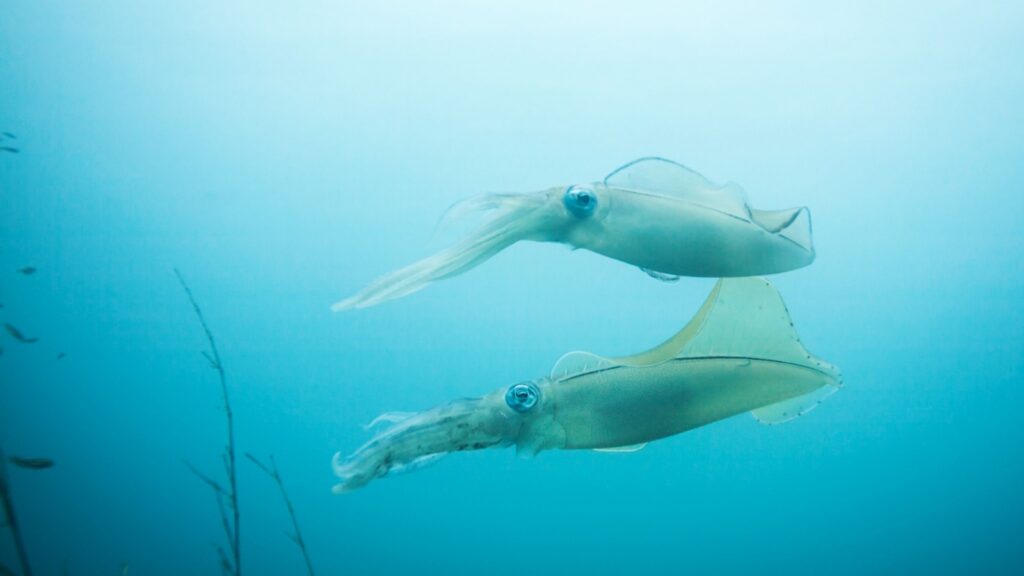
It’s a common belief that ocean sunfish eat mostly jellyfish.
While they do consume jellyfish, they are actually generalist predators. Sunfish feed on a variety of creatures including small fish, squid, and crustaceans.
Jellyfish and salps represent only around 15% of their diet, despite their abundance and the common misconception.
7. Lays the Most Eggs of Any Vertebrate
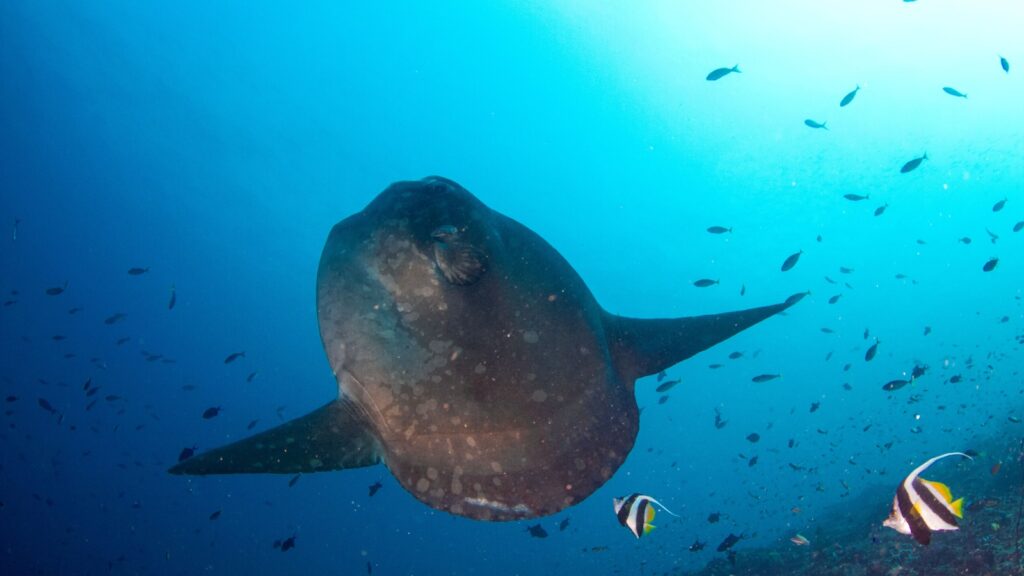
The sunfish, or Mola mola, stands out for the astonishing number of eggs it can lay. With the ability to produce up to 300 million eggs at once, sunfish surpass all other vertebrates in this aspect.
Each tiny egg is less than a tenth of an inch. This remarkable reproductive strategy helps ensure that some young sunfish survive in the vast, predator-filled ocean.
8. Distinctive Flat, Round Body Shape
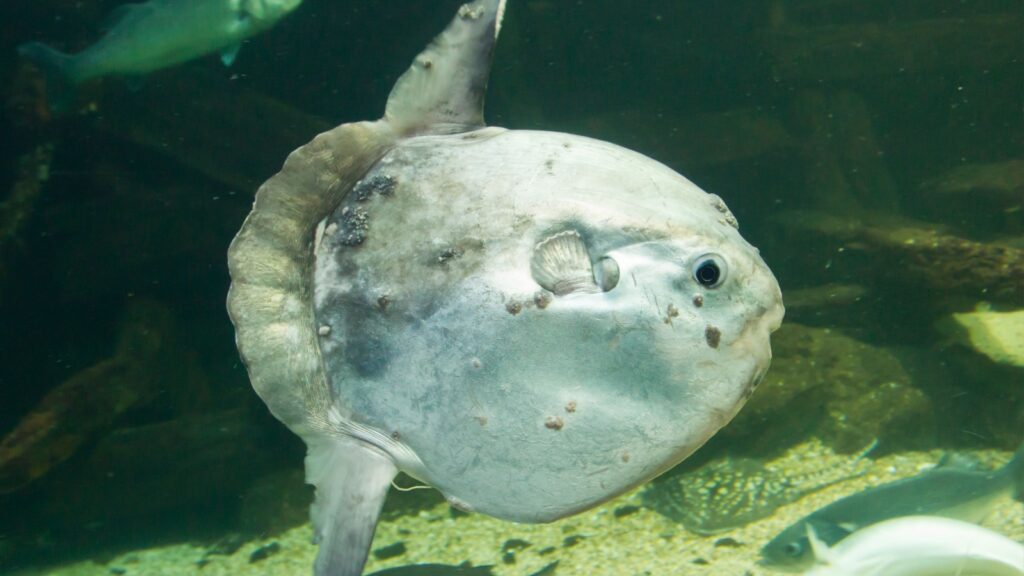
The giant sunfish has one of the most unique body shapes in the ocean. Its body is exceptionally flat and round, resembling a large, vertical discus.
Unlike many other fish, the giant sunfish’s body lacks a true tail. Instead, it has clavus, a structure formed by the convergence of the dorsal and anal fins.
These unique features make the giant sunfish look almost like a picturesque marine creature.
9. Often Mistaken for Sharks
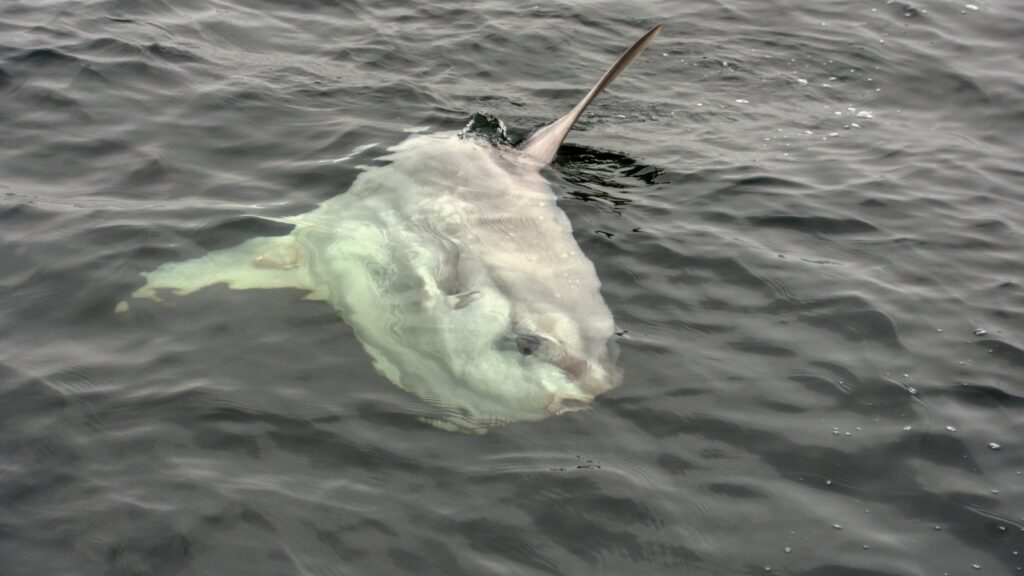
You might be surprised to learn that the giant sunfish is often mistaken for sharks. This happens because of their large dorsal fins which can resemble those of sharks when seen from a distance.
Their unique, rounded body can confuse even experienced sea-goers. Instead of a sleek, elongated body like a shark, the sunfish has a more flattened and circular shape.
Next time you see a large fin in the water, remember it might just be a giant sunfish.
10. Can Jump Out of the Water
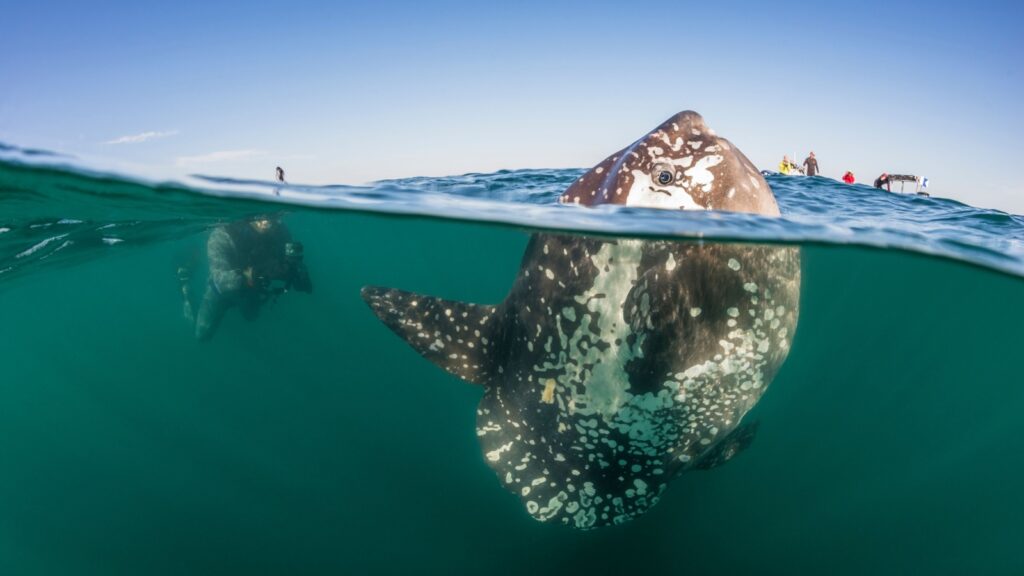
You might be surprised, but giant sunfish can jump out of the water.
Despite their large size, these fish are capable of breaching the ocean’s surface. When they leap, it can be quite a sight given their enormous, flat bodies.
Scientists believe this behavior helps sunfish get rid of parasites. You may catch a glimpse of this impressive act if you’re lucky.
11. Known to Bask at the Ocean Surface
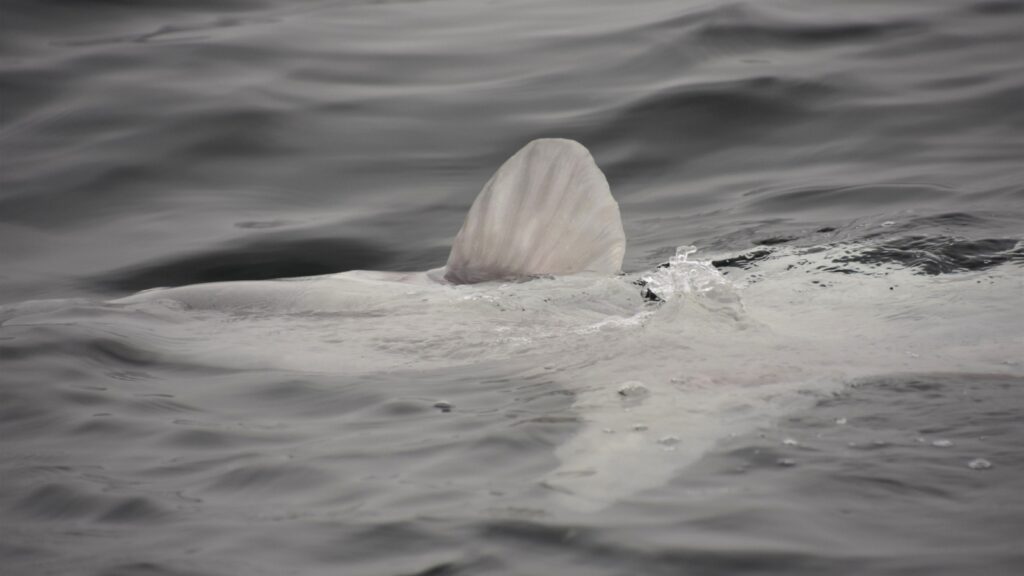
You might spot the giant sunfish, or Mola mola, basking at the ocean’s surface. This unusual behavior helps them to warm up after deep dives. By floating flat on their side, they soak up the sun’s rays.
Basking also allows seabirds to pick off parasites from their rough, silvery skin. This mutual relationship benefits both species. So, next time you’re by the ocean, keep an eye out for these intriguing creatures.
12. Smooth Yet Rough-Textured Skin
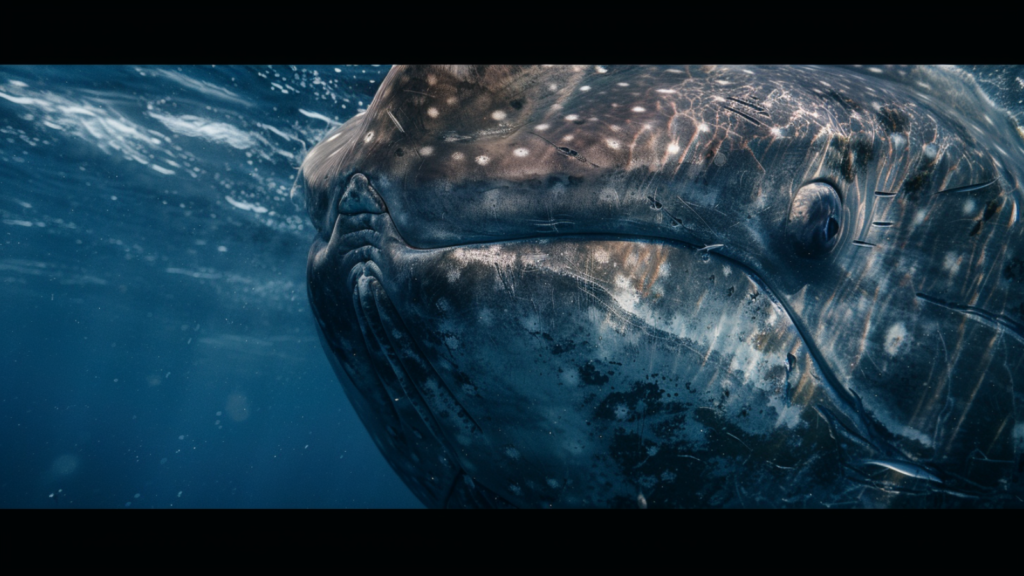
The giant sunfish has a unique skin texture. Up close, it looks smooth, almost like a streamlined surface meant to glide through water. However, when touched, it feels rough, covered in small, sandpaper-like bumps.
This texture helps protect the sunfish from parasites. The roughness can knock off harmful organisms as the fish moves through the water, effectively keeping its skin clean.
13. Teeth Form a Beak-Like Structure
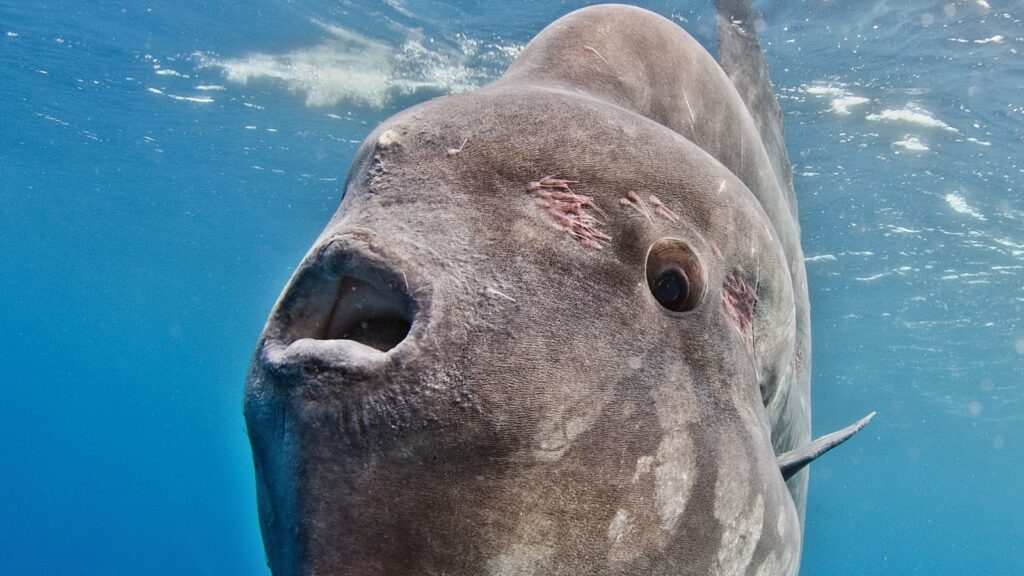
Ocean sunfish, known scientifically as Mola mola, possess a unique dental structure. Their teeth are fused together, forming a beak-like shape.
These teeth are arranged in two plates that allow the fish to effectively crush and grind their food. This beak-like structure helps them handle their diet, which often includes jellyfish, crustaceans, and small fish.
This adaptation is vital for their feeding habits in the ocean.
14. Found in Temperate and Tropical Oceans
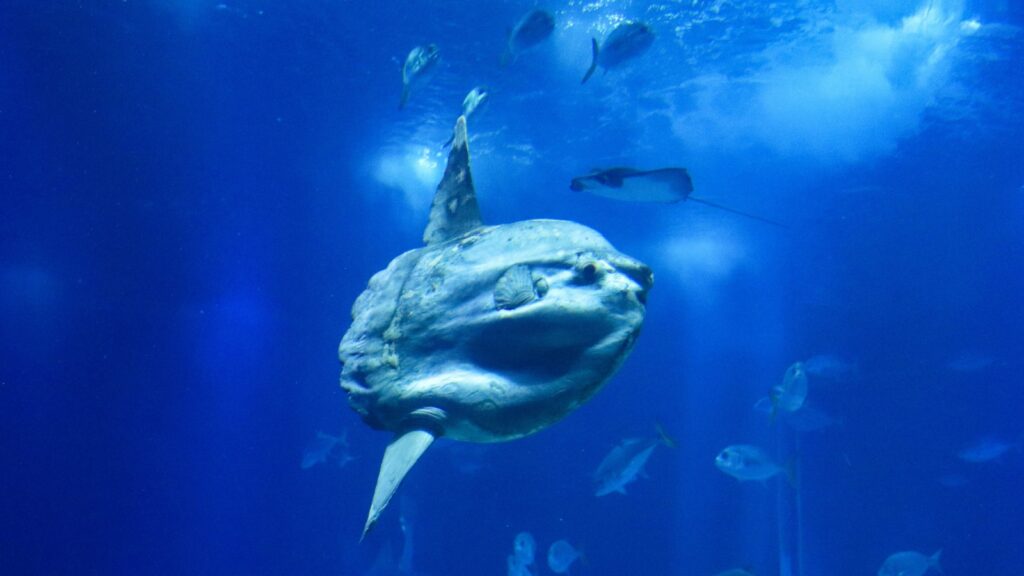
Giant sunfish live in both temperate and tropical oceans around the world. They thrive in parts of the ocean where the water temperature ranges from 62°F to 78°F.
You’ll find them in the open ocean, usually in regions with warm currents. They are especially common in the Southern Hemisphere but also appear in the waters of the Atlantic and Pacific Oceans.
15. Non-Threatening to Humans
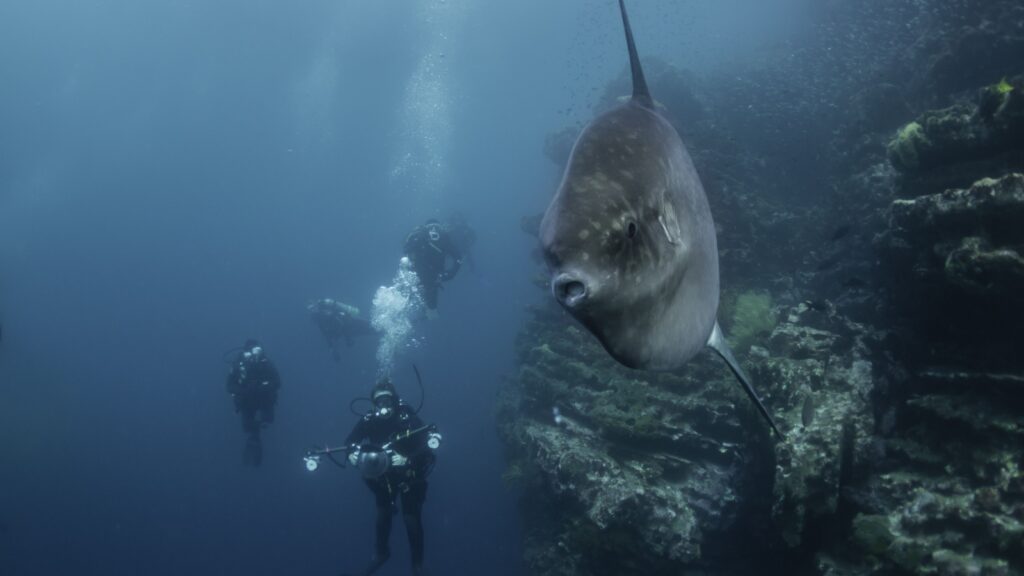
Giant sunfish, despite their immense size, pose no threat to humans. These gentle behemoths are primarily curious and harmless.
They feed on jellyfish, small fish, and other sea creatures, showing no interest in hunting larger animals, including people.
Encounters with them are rare and usually peaceful, adding to their mystique as ocean giants.
16. Sunfish Are Not Strong Swimmers
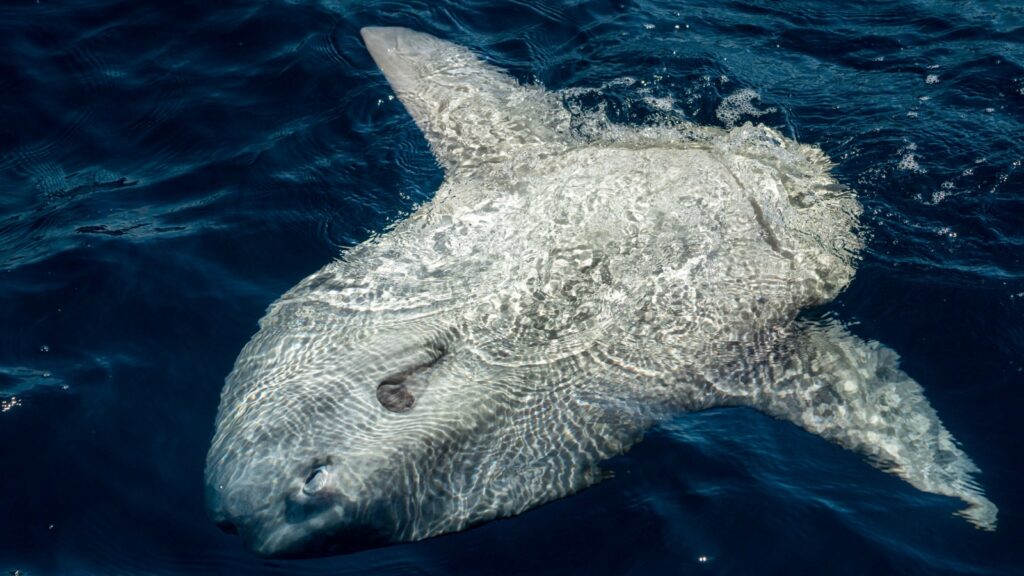
Sunfish, despite their impressive size, are not strong swimmers. Their bodies are round and flat, which makes them less aerodynamic in the water.
They rely on their dorsal and anal fins to move. This unique motion is not very efficient compared to other fish.
You might spot sunfish drifting with ocean currents or moving slowly near the surface. They can’t achieve high speeds or navigate swiftly.
17. Can Grow Over 10 Feet Long
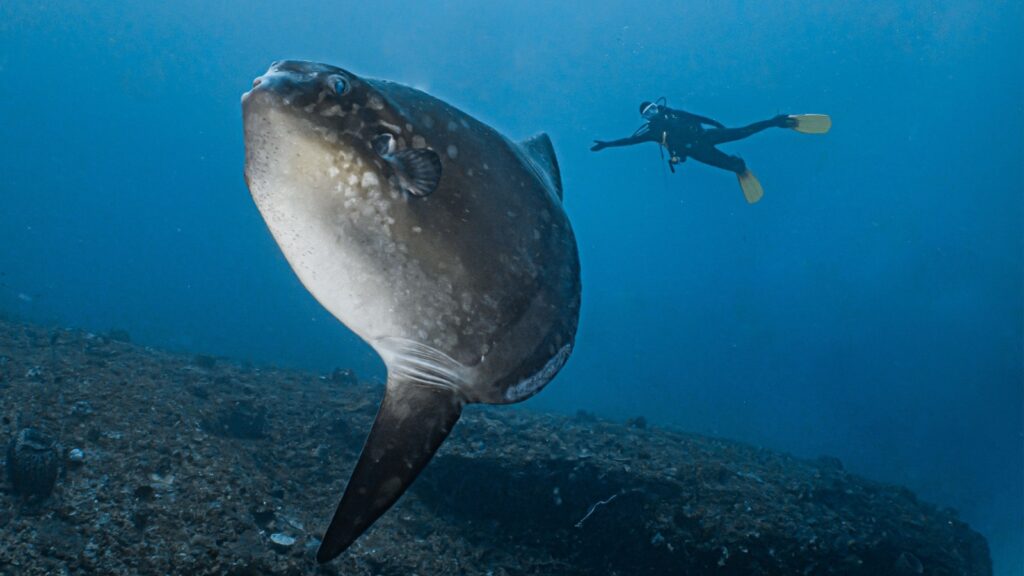
The giant sunfish is an incredible creature capable of growing over 10 feet long.
Despite its flat and round body shape, it can reach lengths of up to 14 feet. This makes it one of the largest bony fish in the ocean.
Its enormous size helps it survive in deep ocean waters by deterring potential predators.
18. Evolved From Pufferfish Relatives
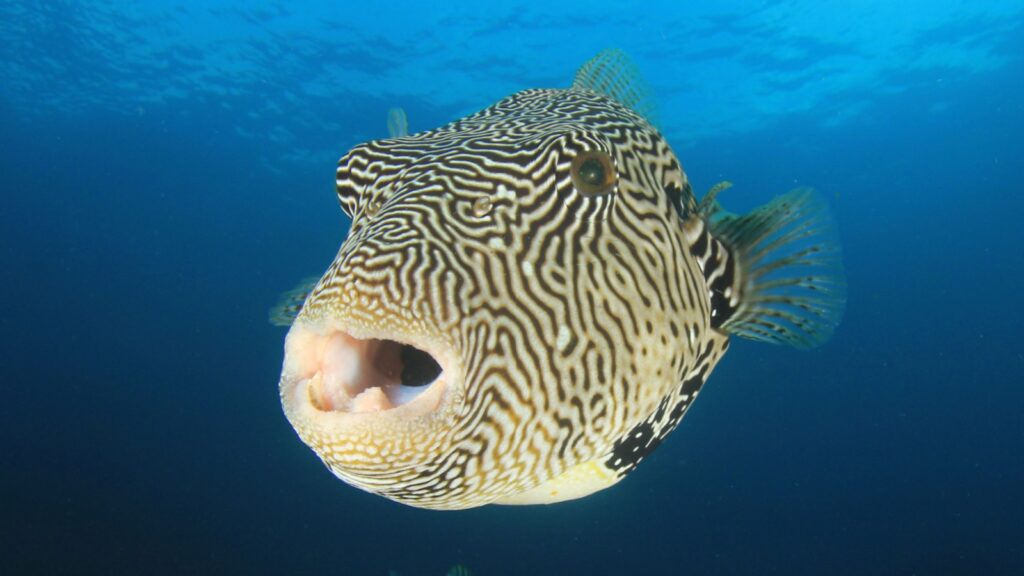
Giant sunfish are fascinating fish that share a common ancestry with pufferfish. Both belong to the order Tetraodontiformes, known for their unusual shapes and abilities.
Like pufferfish, sunfish have evolved unique adaptations in their skeletal and muscular structures. This includes the loss of certain bones and the development of a distinct way of swimming.
These evolutionary traits highlight a shared lineage that dates back millions of years.
19. Lacks Caudal Fin, Uses Clavus for Propulsion
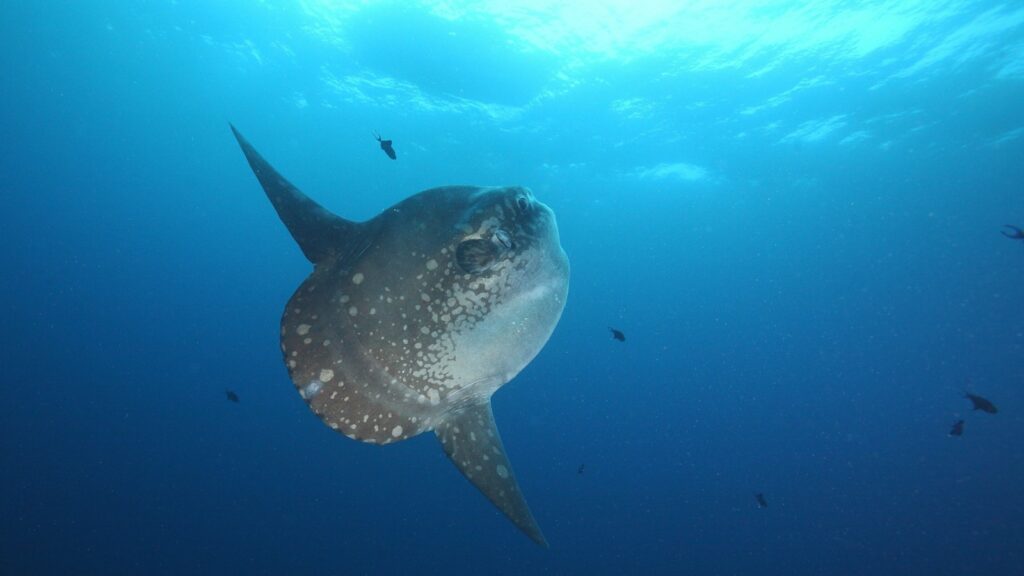
Unlike most fish, the giant sunfish lacks a caudal fin.
Instead of a tail, it has a structure called a clavus. The clavus is formed by the extensions of the dorsal and anal fin rays.
This unique structure helps the sunfish move through the water. It acts like a rudder, steering the fish as it swims.
The sunfish uses the clavus to navigate and maintain stability.
20. Symbiotic Relationships With Seabirds
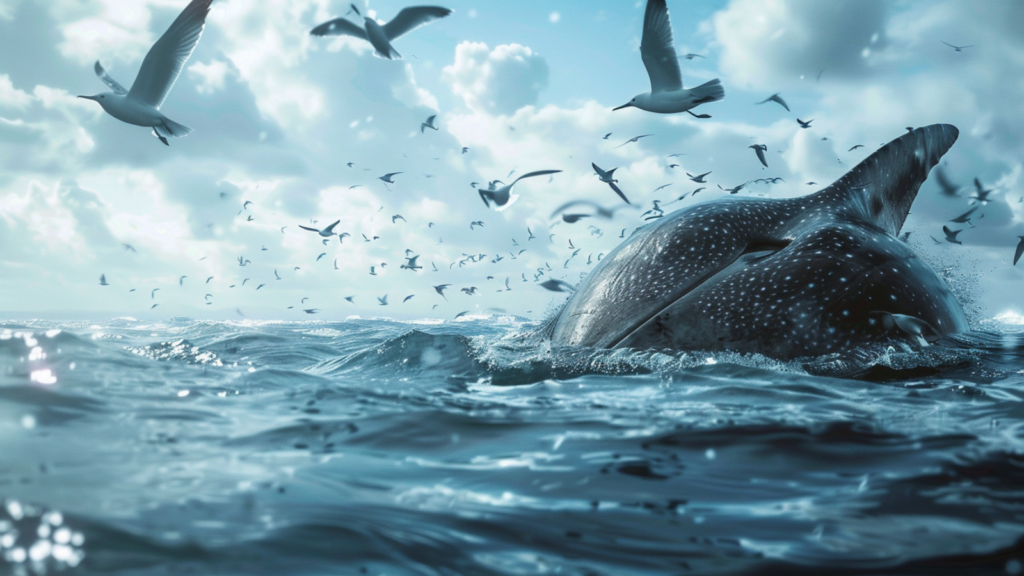
Sunfish have an interesting relationship with seabirds. These large fish often bask at the surface, attracting seabirds that perch on their bodies. The birds help by eating parasites off the sunfish’s skin.
This mutualistic relationship benefits both. Sunfish get cleaner, healthier skin, while seabirds get a meal without much effort. This interaction is an example of how species in the ocean help each other survive.
1. Gobies and Cleaner Fish Remove Parasites
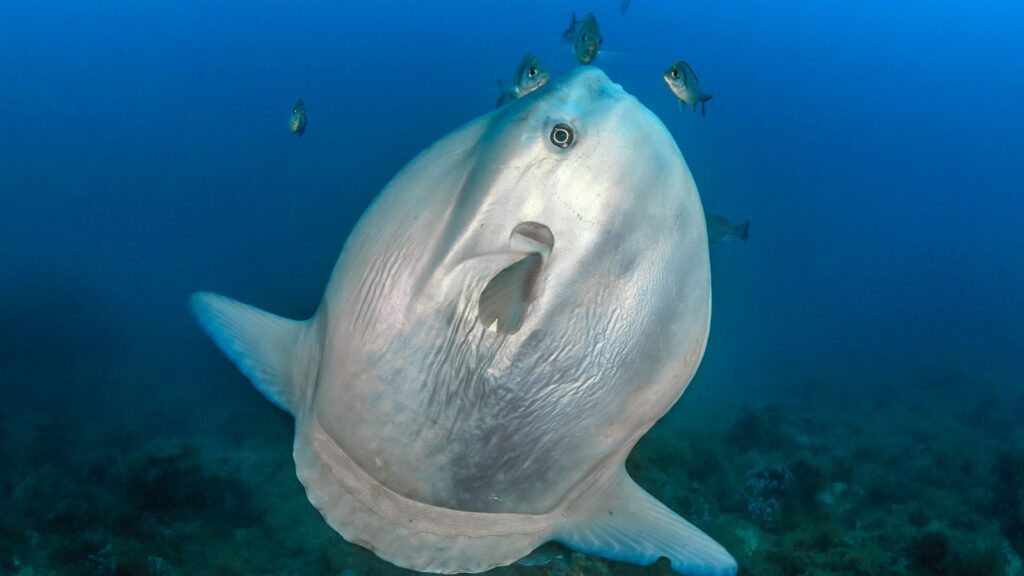
Gobies and cleaner fish play a vital role in maintaining the health of coral reefs. By removing parasites from larger fish, they help prevent diseases and increase survival rates.
These cleaner fish set up “cleaner stations” where larger fish come to be cleaned. It’s a fascinating mutual relationship, as the larger fish get rid of harmful parasites, while the cleaner fish get a meal.
22. Produce a Range of Sounds for Communication
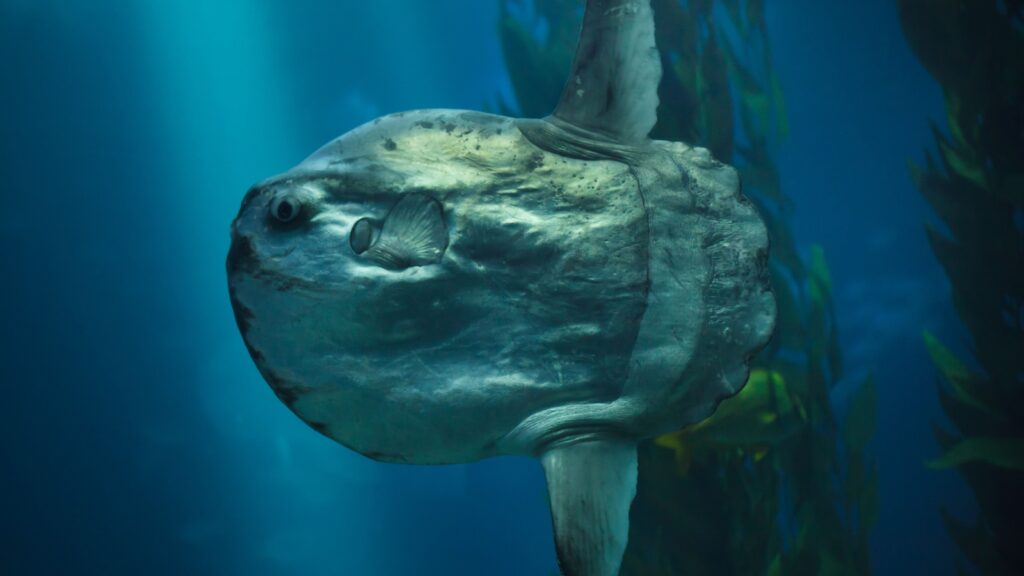
Giant sunfish use a range of sounds to communicate with each other.
Researchers have recorded these fish producing low-frequency grunts and clicks.
These sounds are likely used in various social interactions and to help maintain group cohesion.
Sunfish may also use these sounds to signal distress or alert others to potential dangers nearby.
23. Highly Susceptible to Plastic Pollution
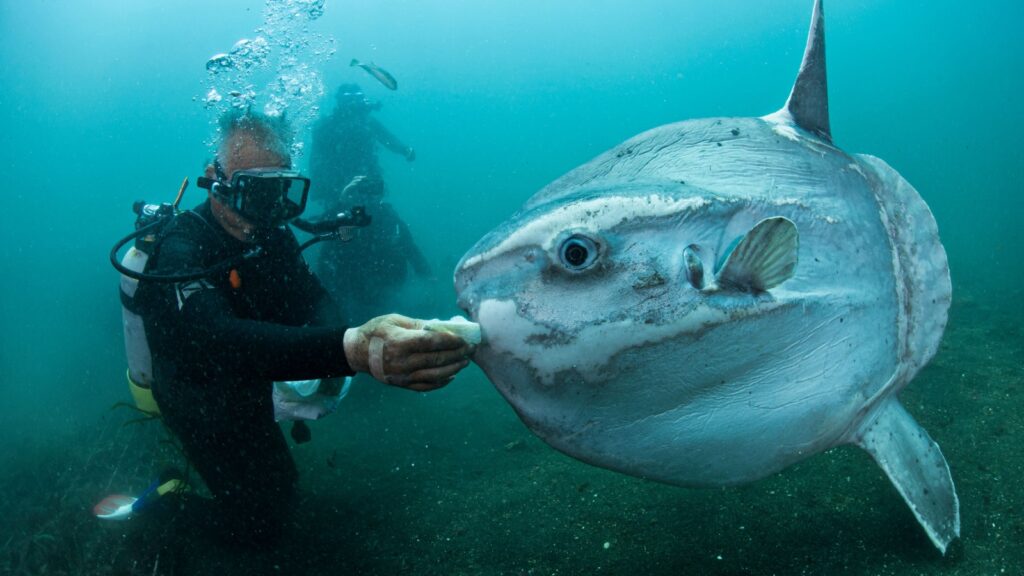
Giant sunfish face significant threats from microplastic pollution in the ocean. They often ingest plastic fragments mistaken for food.
Most commonly found plastics include styrene acrylic copolymer and rayon fibers. This pollution poses serious risks to their health and survival.

